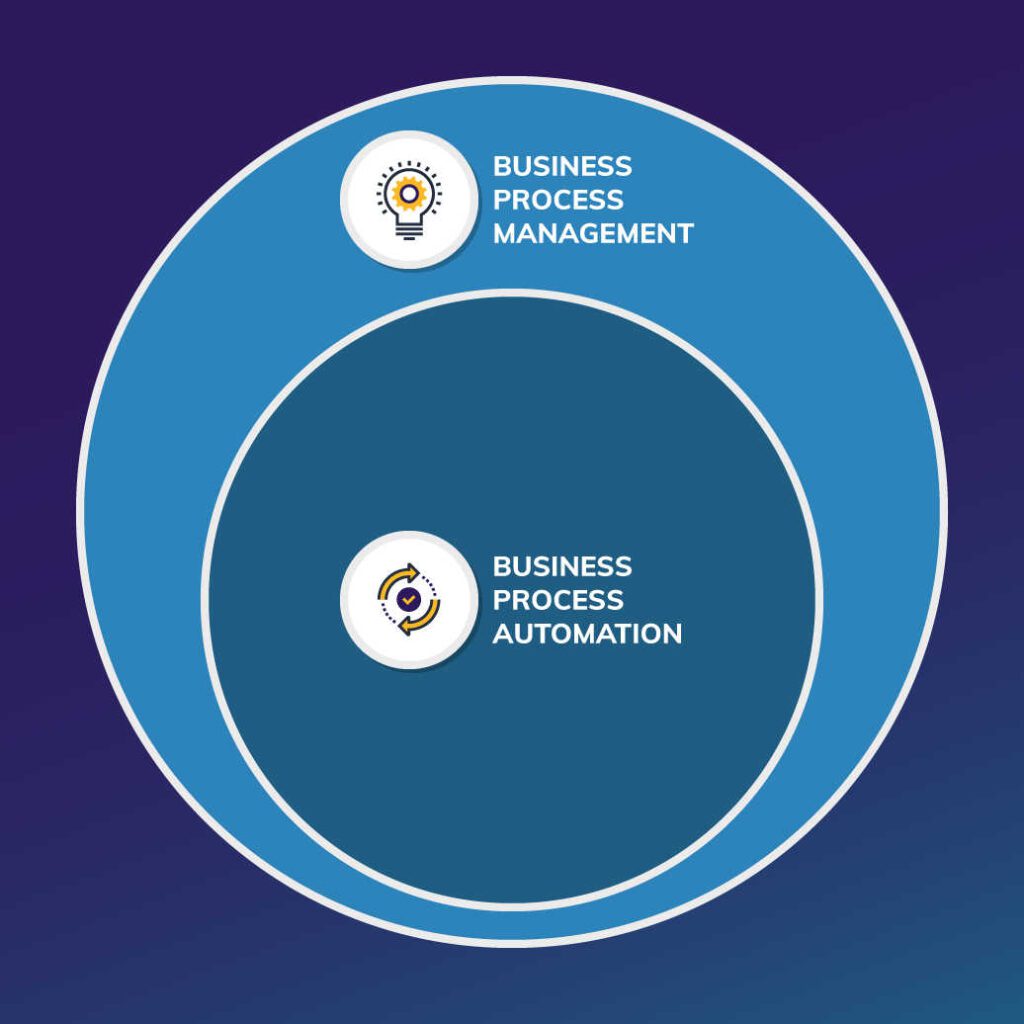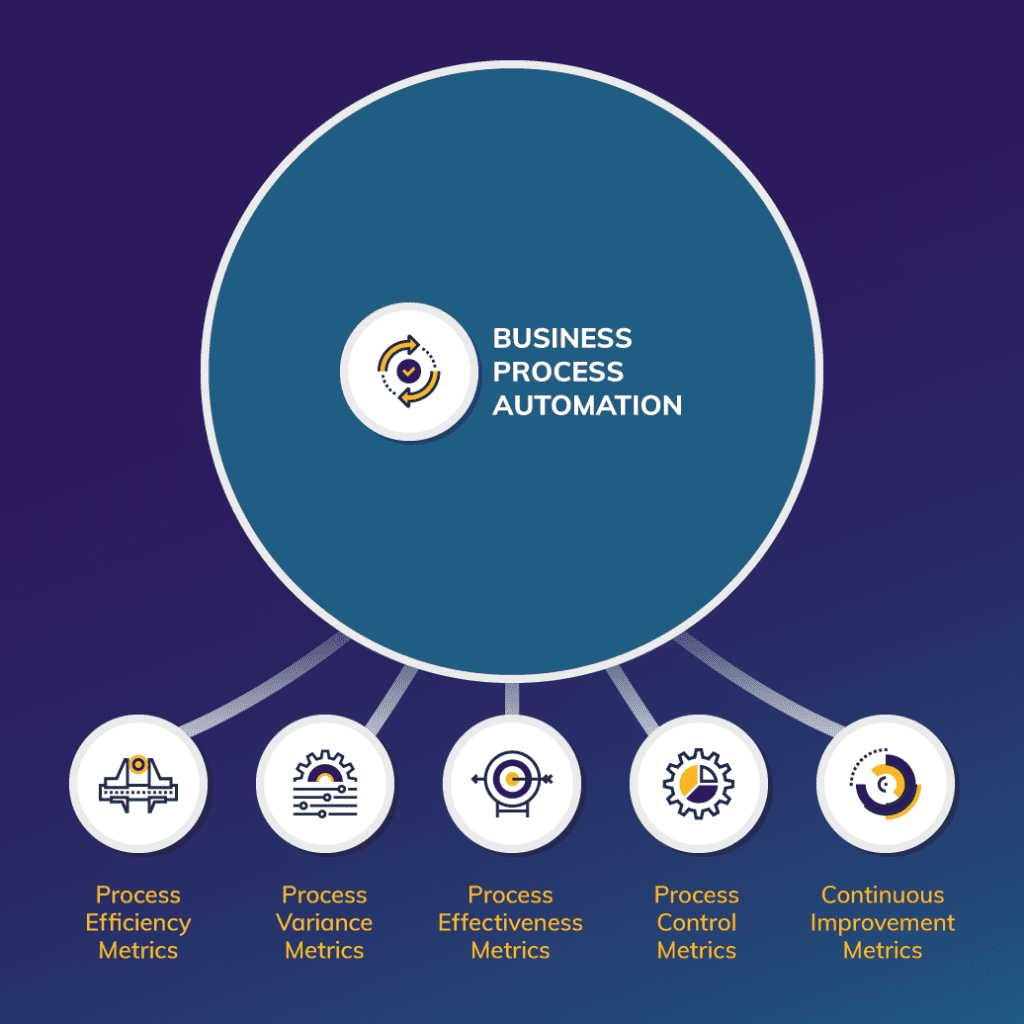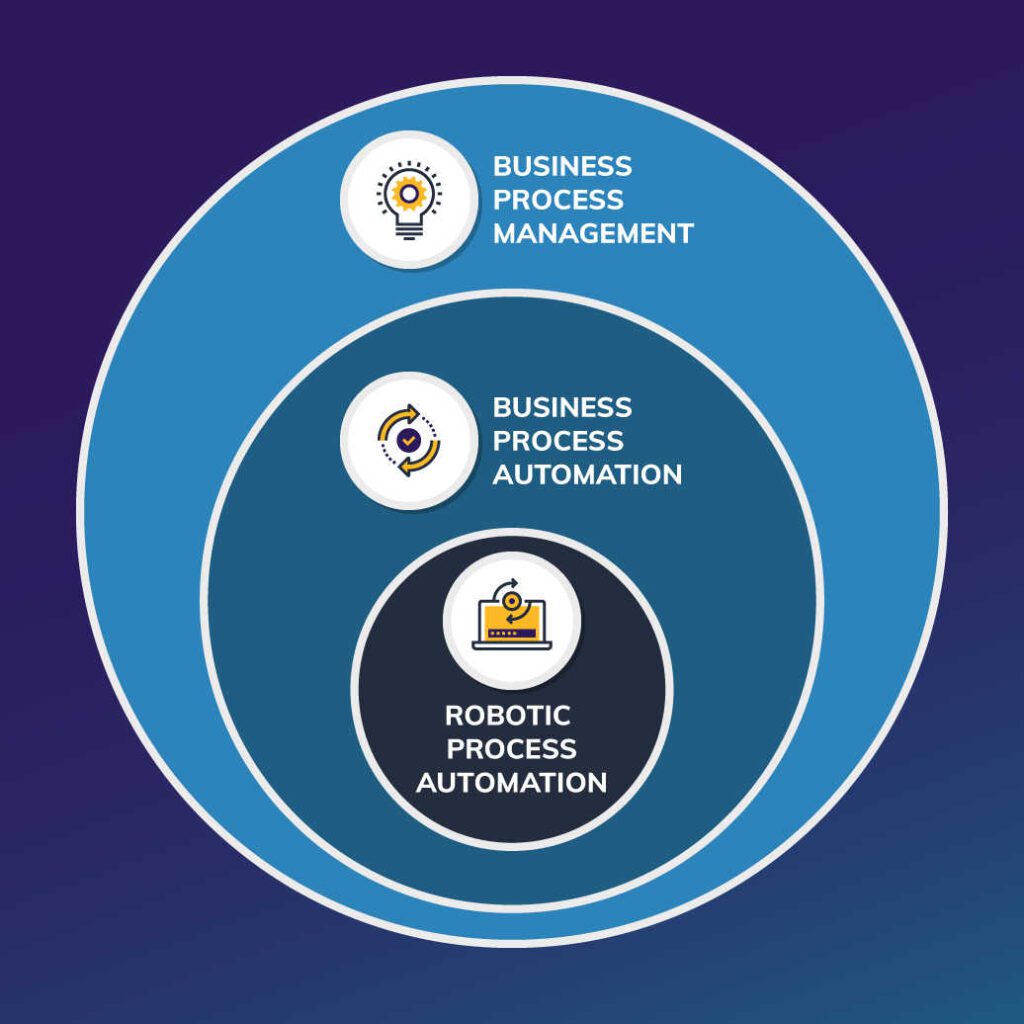Discover how business process analysis enhances operational excellence by complementing business process management, driving efficiency, and delivering customer value.
Organizations must continuously refine how they operate — improving efficiency, driving innovation, and staying laser-focused on customer needs. At the heart of this effort is business process analysis (BPA), a function that’s rapidly emerging as the new frontier in process excellence.
While business process improvement (BPI), business process management (BPM), and business process management solutions (BPMS) laid the groundwork for integrated, enterprise-wide optimization, BPA is now taking center stage. It provides the critical insights needed to evolve those processes in smarter, more agile ways.
More than a decade ago, we explored how BPI, BPM, and BPMS collectively drive operational excellence. Today, we’re revisiting and reframing that conversation — adding BPA to the mix to better reflect how modern businesses can deliver products and services more efficiently, innovatively, and profitably than ever before.
The Business Process Family: Key Definitions
For starters, let’s give a brief definition of each function so we can see how they’re members of the same business process family.
Business Process Management
Business process management is the head of the family, so to speak, in that BPI, BPA, and BPMS all are subsumed within it.
At its core, BPM is how an organization manages and improves all its processes. It’s all about continuously improving processes to make the customer experience — and delivering value to the customer more quickly — the most important priority.
BPM also includes performance management, organizational change management, and technology to make sure process improvements are successful and sustainable. It fosters a culture that implements long-term, enterprisewide, and continuous improvements.
Business Process Improvement
Business process improvement, then, is an inherent part of BPM. BPI’s preeminent focus is boosting customer value by continuously improving quality, productivity, service, and cost savings.
Business Process Management Solutions
Business process management solutions use technology-based platforms to model, manage, modify, and optimize business processes. BPMS solve process-related problems through automation, collaboration, and visibility.
These solutions serve two main purposes. They build agile workflow solutions for process and build a custom-developed application on top of a workflow engine that streamlines operations.
Business Process Analysis
Business process analysis uses data to document and analyze business processes to make them more efficient and better able to deliver value. BPA uses the data it collects to tell you which processes are (and aren’t) working well and where there is waste and duplication. Then it relies on predictive analytics to identify a process for improvement and visualize how to improve it.
Data — its compilation, analysis, flow, and integration, and how artificial intelligence (AI) is supercharging the power of its value — has become the single most transformative influence on business.
Data is integral to what business process analysis can do. Since business process management is the all-inclusive wellspring for all business process improvement applications, it’s important to look at the relationship between BPA and BPM.
The Relationship Between BPA and BPM: Different Yet Complementary
Business process management is an overarching term that encompasses BPA, and it’s a means to provide standardized governance to all processes throughout the organization. Business process analysis, however, is a more cutting-edge BPM variant that employs data to find ways to improve processes and, unlike BPM, aligns those processes with business objectives.
Since the data enables a more granular, thorough, and faster analysis, that data can tie all process improvements to the bottom line and identifies processes that cut costs, grow value, and increase efficiency.
By using business process analysis, a company can pinpoint which processes align with their key business objectives and prioritize analyzing and improving those processes. This helps companies determine where and why business process deficiencies exist and develop process improvement plans to fix them.
BPA is very effective in analyzing problematic situations, such as recently adapted but underused technology, recurring turnover, and marketing process metrics that may not align with key performance indicators (KPIs) such as customer conversions and qualified lead engagement.
Now, let’s look at how BPA can improve business processes in specific ways.
The Business Case for BPA: Tangible Benefits for Organizations
BPA’s value proposition centers around how much nimbler, more responsive, and more economical it can make business processes and how it enlists vanguard technologies to reach that goal.
That prospect resonates for the vast majority of businesses — those in the small and medium-sized enterprise category — because misaligned or malfunctioning processes can immediately impair their operations.
The benefits of business process analysis start with the efficiency gains that make organizations more agile. BPA yields better time-to-value results — that is, how long it takes before a customer gets value from a product or service, which has repercussions for customer satisfaction and retention, not to mention revenue. BPA also reduces operational cycle time for workflows, such as employee onboarding or intake processes for customers or patients.
And, when a business is more efficient, it can optimize its deployments and releases. Siloed communications, development, and execution channels create process-frustrating bottlenecks, but a business process analysis can detect where that’s happening and resolve approval process obstacles.
BPA tells you where you have costly task and labor redundancies and how moving to digital document workflows can save money by cutting down on the human error and time that can prolong document searches.
That’s a good segue into what BPA can do to empower technology. Enterprisewide or even departmentwide technology adoption can be a daunting process. But BPA can install processes with useful training programs and workflows that encourage higher adoption rates.
How to Measure BPA Success: Key Performance Indicators
If you’re going to see the value proposition for BPA in tangible terms, you need process metrics to do it. There are several types of these metrics:
- Process efficiency metrics measure performance and productivity by evaluating how effectively a process implements resources.
- Process variance metrics tell you how much actual process performance differs from the expected performance. Key metrics to consider are:
- Standard deviation, which measures inconsistencies in results
- Range, which highlights the difference between the highest and lowest values
- Process effectiveness metrics focus on process quality and outcomes.
- Process control metrics monitor business process compliance and conformance.
- Continuous improvement metrics quantify the benefits of business process improvements.
Understanding these metrics is essential for enhancing performance and ensuring consistent outcomes.
A Caveat: Beware These Common BPA Pitfalls
A cautionary note is necessary: The value a business derives from a BPA can be greatly diminished if it doesn’t confront these common BPA pitfalls.
- Lack of clarity and scope
- The right stakeholders aren’t involved
- You don’t have sufficient and reliable data and evidence
- The necessary tools and methods are missing
- No alignment or integration with the overarching business strategy, vision, and goals
- No change management and follow-up
To realize the full potential of a business process analysis, you need to integrate it with business process management methodologies.
Implement BPA with BPM Methodologies: A Step-by-Step Approach
Follow these practical steps to gain BPA benefits from business process management methodologies.
1. Select and Identify Your Target Process
Determine the business processes that significantly impact efficiency, cost, or customer satisfaction. Then, define the scope of the process by covering aspects such as where it starts and ends, major stakeholders, and relevant subprocesses.
2. Compile and Analyze Data
Review the process-related documents you have, such as procedures, system reports, and workflows. Then interview process stakeholders, including owners and users, to pick their brains. See how the process actually operates so you can spot potential problems. Also, collect process-related qualitative data such as cycle times, associated costs, and error rates.
3. Map Your Process
Use tools such as flowcharts, swim lanes, or BPM software to develop a detailed process map that visually demonstrates the sequence activities, data flows, and decision junctures within the process. Analyze the map to find out where there’s room for improvement (e.g., eliminating bottlenecks, duplications, or delays).
4. Improve Your Process
Start with a root cause analysis to learn why problems are happening. Next, create KPIs that measure process effectiveness and monitor improvements. Ultimately, come up with solutions that can resolve the identified issues, such as automation, process simplification, or system alterations.
5. Develop and Implement Solutions
This fleshes out the previous step. Choose the most effective improvement plans based on a cost-benefit analysis and develop a detailed plan for making the changes, including new procedures, system updates, and training requirements. Finally, you must provide change management that effectively tells stakeholders what the changes are and steers the transition to the new process.
6. Track Continuous Improvement
It’s important to know whether the improvements you’ve implemented continue to hold up. That’s why you should use KPIs to regularly track the impact on process performance changes that you made.
Develop a feedback loop where users and stakeholders can report on their experiences to help you find areas to improve. Over time, take that feedback and your ongoing analysis to continually refine the process.
You can take these steps in a sure-footed way by using business process improvement methodologies that fit your business goals and the nature of your workflows. These could include:
Companies apply business process analysis and business process management approaches to business process functionality because they’re seeking process excellence. Business process management solutions can support that purpose in a few big ways. Let’s look at them.
Select the Right BPMS for Your Organization
Your business processes are absolutely foundational to the success — even the ongoing existence — of your business. Optimizing those processes is the key to gaining a competitive advantage and attaining your business strategy.
A BPM solution helps you model, manage, automate, and refine your business processes for greater efficiency and collaboration.
Typically, BPM solutions fall into three related but distinct categories:
- Document-centric. A document-centric BPM creates a document after several people have weighed in on and approved it.
- Integration-centric. This kind of BPM integrates companywide software with other department-specific point solutions. This software-system connect lets data flow smoothly, accelerates the pace of work, and reduces error-inducing manual entries.
- Human-centric. Human-centric BPM precisely balances automation and human intervention so you can manage tasks and create workflows between people. This tool usually provides a visual user interface so people can interact, as well as understand and affect processes.
A business process analysis is unique to the business for which it’s conducted because it’s inspired by and flows from an organization’s key goals and objectives. It creates a bespoke template for how a business instills, maintains, and adjusts change management throughout the enterprise. Consider how that happens.
BPA as a Strategic Enabler: Connecting to Organizational Goals
BPA informs and integrates with the goals of a business and how it manages change by shedding a light on where processes are inefficient so a company can formulate strategies to improve performance and realize those goals. Frequently, this involves developing a structured change management approach.
BPA makes this connection by:
- Identifying areas of improvement — through process mapping, among other actions — so that important organization goals (e.g., cost reduction, efficiency, customer satisfaction) can be optimized
- Aligning process improvements with strategic goals
- Carefully designing a change management plan to diminish employee resistance, smooth the path to implementation, and provide sufficient training
- Clearly explaining why the process changes are happening and how they’ll benefit the company so that key stakeholders support what you’re doing
BPA supports change management by:
- Enabling evidence-based decision-making by providing data-driven insights into process problems
- Process mapping (i.e., visual representation of current processes) to help stakeholders see the potential results of proposed improvements
- Analyzing potential risks and impacts of proposed changes so they can be mitigated, if necessary
- Tracking process performance after implementing the changes to find where additional changes should be made and ensure the sustainability of change over time
So how might this look in the real world?
Well, say the goal is achieving a 20 percent reduction in customer response time. BPA can identify snags in the customer service ticket escalation process, such as duplicative data collection activities and sluggish interdepartmental handoffs.
From there, a new ticketing system can be put in place that streamlines data capture, trains employees in the proper usage of the system, and develops clear escalation procedures. After the system is installed, you can track customer service response times to see if it’s working properly and adjust it as needed.
As with everything else having to do with business processes, automation has significantly advanced the capabilities of business process management and business process analysis. At the forefront of this development is robotic process automation (RPA).
The Automation Factor: RPA and BPA
Robotic process automation is software — specifically, software bots that can readily automate work that requires computer services. RPA extracts and transfers data upon request. For instance, a bot can automatically copy data from existing fields of a new invoice and subsequently paste the data into another system, such as accounts payable.
RPA’s primary value is eliminating repetitive and rule-based manual tasks. It’s easy to deploy and can manage business processes and their applications seamlessly throughout the organization. While RPA isn’t always equipped to correct fundamental process flaws, its remedies can happen almost immediately.
Business process management has a greater scope than RPA in that it reshapes the entire business process and augments overall business efficiency and productivity.
Yet RPA can do what BPM can’t — automate processes — and in so doing can complement and enhance BPM’s effects. Here are a couple of ways this produces desirable results:
- More efficient process documentation. BPM is about understanding and documenting processes. It manages business processes that are found on multiple types of documents yet lack any real governance or maintenance over time. RPA establishes the level of efficiency that gives businesses well-understood, properly documented processes that are capable of continuous improvement.
- Link up legacy or modern systems. BPM uses intricate, legacy-dependent systems for business functionality, and most of these functions require people to operate or assist them. Smoothly integrating RPA into the legacy systems — where it automates clunky, assembly-line-type tasks involving data extraction, transfer, and processing — helps BPM save time and effort while minimizing errors and improving overall data quality.
In sectors such as banking and finance, for example, BPA can ensure there is digital connection amid modern mobile applications and the legacy IT structure. At the same time, RPA activates a rule-based set for executing actions from one system and inputting them into another one.
Business process analysis can pinpoint opportunities for robotic process automation to do its thing by analyzing complete business workflows to find the redundant, tedious jobs within those processes that use structured data. Then BPA can deploy RPA software to automate these tasks and, effectively, streamline the overall workflow, reduce errors, and increase efficiency.
Specifically, BPA works through RPA to find automation targets by:
- Process mapping. BPA tools map out complex processes and visually identify manual entry decision points and data flows that are ripe for RPA automation.
- Data analysis. BPA analyzes process data associated with execution time, error rates, transaction volumes, and resource use and are amenable to RPA intervention.
- Stakeholder interviews. Consultations occur with employees who work the process to uncover pain points, opportunities for improvement, and unduly complex processes.
- Prioritizing impacts. Automation opportunities are assessed and prioritized for action according to their potential effects on efficiency, cost reduction, and business value.
Business process analysis also plays a big role in preparing an organization to undertake the digital transformation on which automation is based.
Business process analysis is a systematic approach to learning about, evaluating, and improving the processes that enhance business value, innovation, and success. It positions a company to enter the digital space by helping it understand how its existing processes work, detecting inefficiencies, and pointing out areas for improvement.
BPA achieves this because it’s a very precise, incremental activity that breaks businesses down into manageable segments for examination. It assesses the effectiveness of every component, however small, and determines how well the processes fit business goals.
That empowers the organization to make smart, informed decisions, consolidate operations, and drive performance excellence — which empowers the digital transformation to yield tangible benefits and provide a bigger competitive edge.
Going digital without first doing a business process analysis is doing things in the wrong order. Marc Noviello, a senior digital transformation specialist at Docufree, explains why this happens:
“Transformation projects largely fail because people believe, and are sold by vendors to believe, that tech will solve all their problems. They become so enamored with technology they make it the centerpiece instead of focusing on the operating model.
“Technology alone will not fix a broken process. Transformation first requires a blueprint that clearly communicates and visually outlines what it is you are trying to do, how you’re accomplishing that today, and what successful execution should look like. Then, it identifies how any improvements can be met with the right technologies. Business process analysis is that blueprint.”
So, after all of this, the question becomes: What’s the future for BPA?
For any given organization, the logical follow-up after doing a business process analysis is determining next steps. And that’s all about balancing short-term goals (such as quick-to-realize efficiency improvements) with longer-term goals that fulfill broader strategic objectives.
The larger answer involves how business process analysis is being shaped by several emerging trends.
The Future of BPA: Short-Term and Long-Term Planning
The first step in your BPA process is setting short- and long-term goals. Short-term goals could be low-hanging fruit that can build momentum, while long-term goals could be more complex and more time- and resource-consuming. Either way, whether it involves growing customer satisfaction or accelerating production time, the goal should be specific, measurable, and doable.
Short-term goals start with what’s wrong. They detect pain points within specific processes and determine which processes are best positioned for quick improvement.
Long-term goals envision larger-scale, systemic changes that could involve process reengineering, automation, and continuous improvement actions for sustained, organization-wide efficiency gains.
The nature of business process analysis will continue evolving in response to technology advances and changing business needs. Here are some of the major factors that are fostering operational agility and sustainable growth:
- Artificial intelligence. Artificial intelligence and machine learning technologies have ushered in the era of automated process analysis. By using AI and ML tools, businesses can find patterns, irregularities, and optimization opportunities at scale.
- Real-time monitoring. Smart devices and real-time data analytics have empowered businesses to monitor and analyze processes in real time, allowing for more proactive decision-making and immediate adjustments.
- Predictive analytics. This capability lets organizations anticipate possible process issues and take preventive steps, which lessen disruptions.
- Collaborative process analysis. As process analysis tools are increasingly equipped with collaborative features, cross-functional teams can collaborate and jointly analyze processes, resulting in more transparency and making improvements more effective.
Embrace BPA for Business Excellence
In the past decade, business process analysis has emerged as an essential part of integrating and optimizing processes across an enterprise. BPA doesn’t simply identify what needs to be improved. It bridges the gap between strategy and execution through targeted process improvements and data-driven insights.
By integrating BPA with established BPM methodologies and using new technologies like RPA and AI, organizations can boost their efficiency and better align their processes with their strategic goals. Organizations that embrace BPA will position themselves to respond to change — and lead it.
Business process management and robotic process automation come together to help you reach enterprise automation maturity. Talk to one of our experts about how you can get started. Contact us




